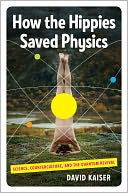
![]()
By David Kaiser
Norton, $26.95, 372 pages
What do spoon-bender Uri Geller, coed hot tubs on the California coast, the CIA’s interest in Russian parapsychology, Richard Feynman and the book The Dancing Wu Li Masters all have in common? That’s easy: hippie physicists! David Kaiser’s seriously documented history of science book How the Hippies Saved Physics details the at-first surprising notion that some physicists working on quantum information theory in the 1960s and 70s were also devoted followers of “psi” phenomena: telepathy, clairvoyance, psychokinesis, remote viewing and much more. They were also interested in the similarities between their scientific work and Eastern religions and mysticism. It was quantum entanglement and Bell’s theorem describing non-locality (“action at a distance”) that convinced many members of the fringe Fundamental Fysiks Group in Berkeley that they were on to something. Despite their efforts in psi research amounting to mostly speculation, Kaiser does well to write seriously about what some may consider pseudoscience. The validity of the science is not of concern here, but rather the academic and cultural context of the New Physics movement, one that stressed theoretical work over pragmatic, post-WWII “number crunching”. These counterculture physicists refused, as a common moniker of the time demanded, “to shut up and calculate”.
Reviewed by Michael Barton
[amazon asin=393076369, B00530FBUG&text=Buy On Amazon&template=carousel]
